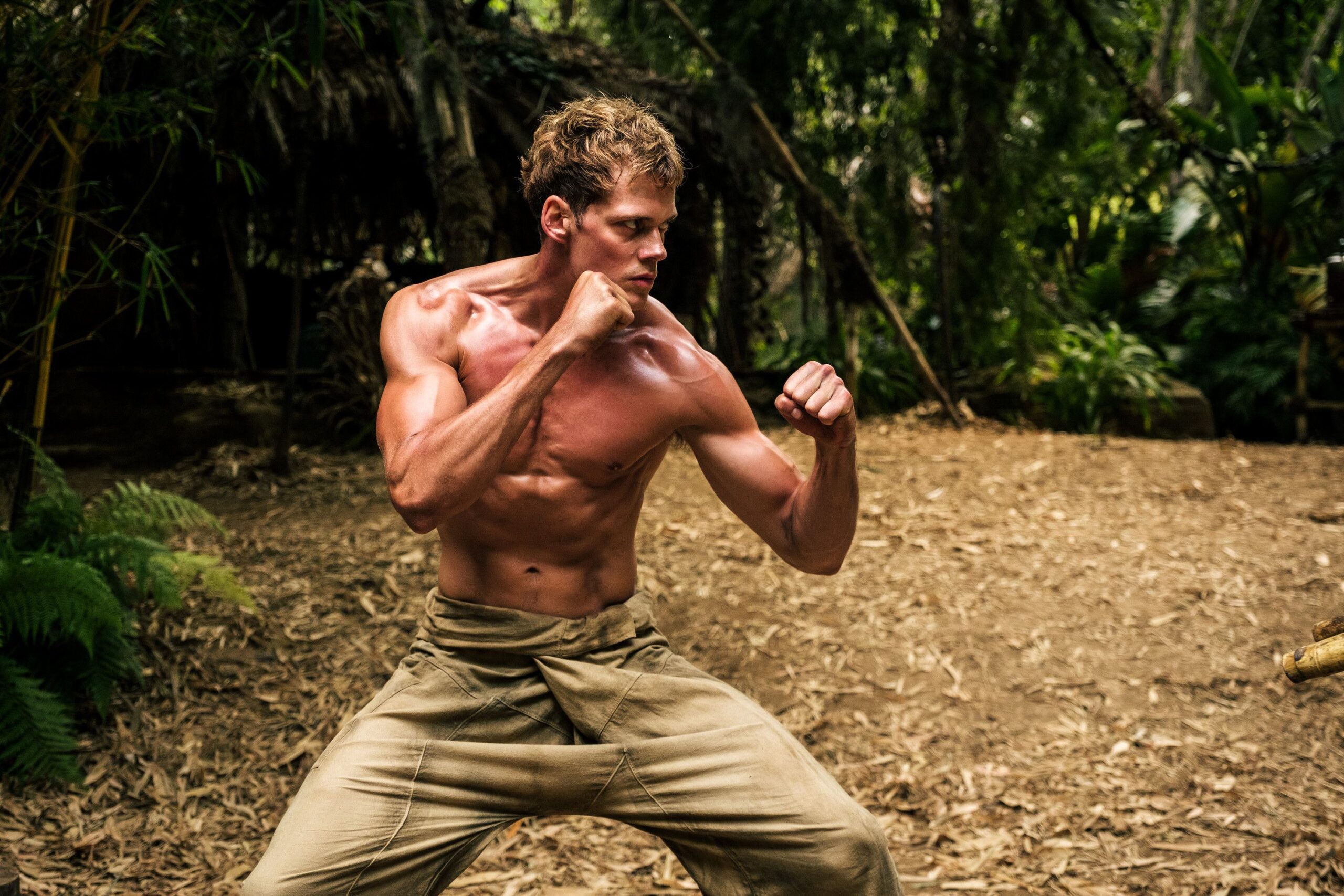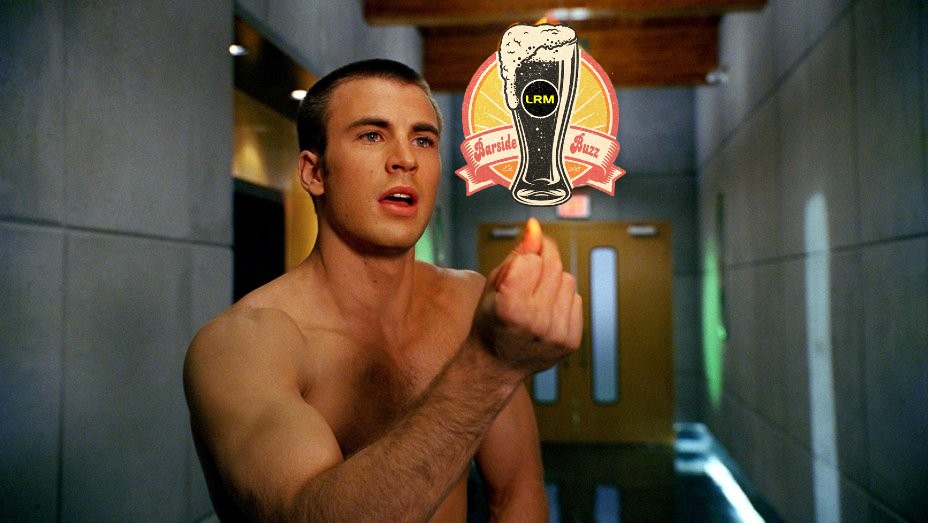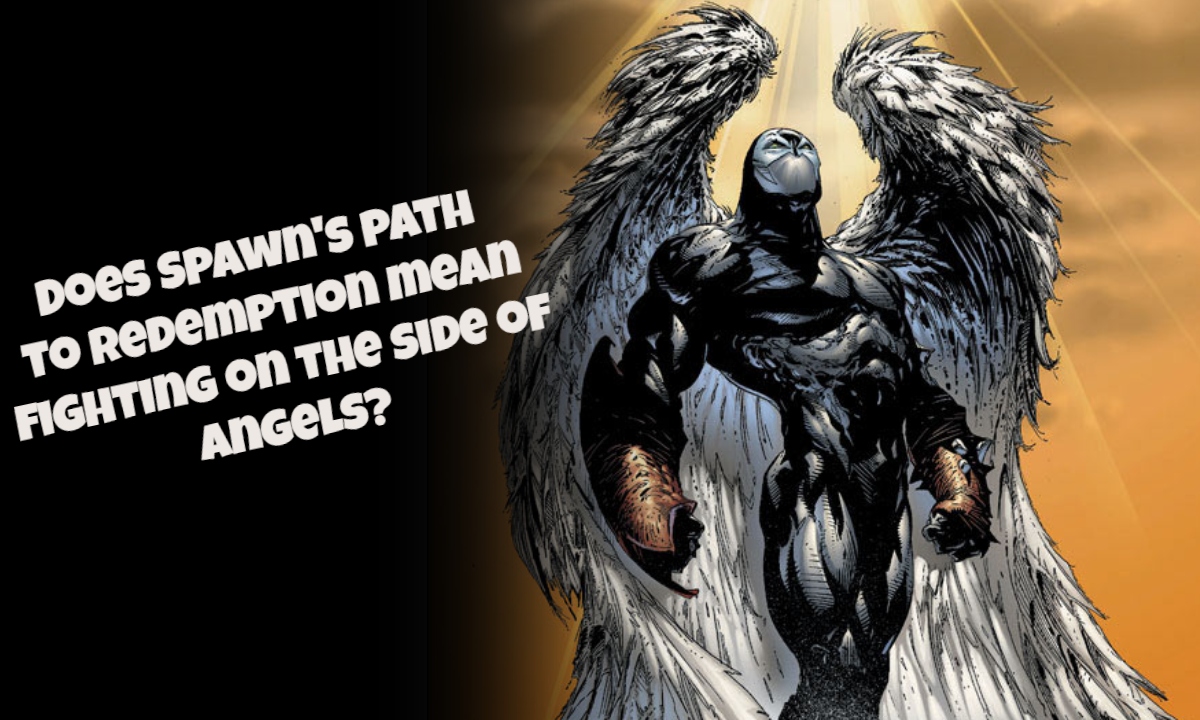In a way, it’s a prison bonding that helped Henri ‘Papillon’ Charriere and Louis Dega survive the treacherous years on a French prison island. The two prisoners developed a brotherly romantic bond that helped them survive and seek escape for freedom.
Papillon starring Charlie Hunnam and Rami Malek about the marvelous true story of the criminals making multiple attempts in their escape.
The adapted screenplay is written by Aaron Guzikowski from the books Papillon and Banco by Charriere himself. The film is directed by Michael Noer.
LRM Online sat down exclusively with director Michael Noer on his experiences making Papillon his first feature film. He talked about the sets, dialects and creating the harsh environments for Charlie Hunnam and Rami Malek.
Papillon is currently playing in theaters.
Read our full interview transcript below.
LRM: Congratulations on this film, Papillon. I’ve checked it out. Very intense. Very riveting. I want to know what initially attracted you to this project?
Michael Noer: My debut film takes place in the prison as well. I very much look at Papillon, especially the book is the mother of all prison movies. To me, it was almost like being offered to do Hamlet. It’s a classical story, which is not only well known, but it also has some core DNA. That really attracted me the possibility of making a bromance in the prison. Almost a melodramatic relationship told in the worst possible environment and in a world of living in their current affair with so little hope. I think I’ve tried to make a film filled with hope actually.
LRM: Since you’ve made the movie with R, which is a documentary.
Michael Noer: It is actually a fiction film. It was shot like a documentary.
LRM: Oh, it was shot like a documentary? What did you take from that movie to bring into a movie like this?
Michael Noer: Not so much the style or the way it was made, but more the knowledge. I probably would only survive five minutes in a real prison. Well, Dega does. I’d probably end up the same way. I did a lot of research at that time. I really liked the book as well, because it’s almost how has this new journalistic approach to it. It’s very rich on details and descriptions. Doing research. Doing a film. Of course, is a vision of fiction, but it’s based on something truthful. I think this truthfulness and trying to achieve something authentic is what I took with me from my film and my other the Danish films as well. Environment description as well. I really liked that.
LRM: Of course, you had to approach it both films differently even though it is fiction. How did you approach this differently from, in terms of research?
Michael Noer: It makes a huge difference that this is an escape movie. In itself, it’s characters to try to uphold hope. To me, my other movies are very much like a lone wolf trying to find and fight the environment. This was truly a collaboration between two characters that initially disliked each other. Of course, it’s Charlie Hunnam portraying Papi that’s the lead, but without Dega or without Rami–there wouldn’t really be that much of a plot. It was very much approaching like another director maybe would approach a love story. It really attracted me to the fil, because it’s not that many times that you have a chance to make a standalone movie about characters versus plot. It reminded me also of the tradition of where I come from, where a budget and an extras and costumes and set designs are things you tend to not be able to dwell into.
LRM: Were you introduced to the book first or were you introduced to the previous movie first?
Michael Noer: As many people, certainly both men and women have always been fighting with the yin and yang inside myself as to feminine and the masculine. Having grown up without a dad, I’ve always been attracted to very masculine on the surface–at least very masculine works of art. Which means like a book, like American Psycho, Papillon and I also like Lolita, which also is a description of a man’s weird mind and sexuality. As a teenager, I read the book and really enjoyed as a teenage classic. I don’t know if that’s a tradition anymore. Certainly at my age, which is now unfortunately 20 to 25 years ago, I read the book. The moment I saw the title. I was both surprised and happy. I jumped straight into reading the script.
LRM: So did you read the book again after reading the script?
Michael Noer: Very much. I’d actually say that the script was in my left hand in front of my face all the time. My right hand was having a cup of coffee, a cigarette or something used to swipe the sweat away. In my back pocket, I always had the had the book. It’s so rich in details and descriptions and, and, and I liked that way of directing, where you give a lot of freedom to the actors in portraying the characters. I try to service them with much world creation in an authentic way of possible. For example, when Charlie’s in isolation, it was Charlie’s own idea and it was his honor that he committed himself so much to isolate himself. That’s also having an environment that makes this possible to actually create a cell which is three dimensional. You can’t get out and you can actually lock the door. That’s something completely different than if it would have been green screen. So Charlie could emerge himself into the physical experience. That was great. In that sense, yes, I directed the movie, but so did the sets.
LRM: So you were kind of supportive on the actors’ method acting by putting themselves in claustrophobic environment and starvation?
Michael Noer: Absolutely. It was with the weather, the environments and the set designs. Literally there was my co-director and helping me through the day.
LRM: Do tell me about the set designs. From my understanding, you didn’t use actual prisons, but you basically created everything from the ground up. Why did you went with that approach?
Michael Noer: I’m so happy that the producers blessed this way of approaching it. First of all, we were able to shoot the film chronologically. So Charlie could lose weight. In the middle of the film, there is an isolation sequence. That was the only sequence I’ve actually shot at the end. Charlie was at his low point physically and maybe also mentally. That fitted very well with the isolation scene. Even though they’re works of fiction, you can say that they’re not a real prison. They’ve actually created totally as real prisons. Charlie was really locked in. You could really touch everything. You could walk around and credit to the photographer as well, it was really a three dimensional experience. It’s also the fact of creating a set design with a roof. It’s initially quite stupid idea, because it gives you a lot of logistical challenges.
When you finally get there and everything’s working– you plug the electricity to shine the light on everything–then you’re just like let’s shoot! Let’s shoot! You’re just thrilled. At least I am. I really liked that. Even though this sounds completely insane, it reminded me so much of how I worked in Denmark where we’re limited in the amount of locations we can use. We always often have to use existing locations. It was very much the same.
LRM: Well, it, look realistic to me. I did not want to be there. [Laughs] How fortunate it is that almost all of your production was done in Europe Was a budgetary decision rather to have it in the Americas?
Michael Noer: A huge credit to Tom Meyer, because he saw the potential in using these eastern European and multiple locations. Europe is so sparse. There’s tough environments and they’re visually stunning. There are no cars. No airplanes flying above. It’s very isolated. The trick really was for him to try to succeed and just planning a lot of palm trees and that gave the illusion of the jungle. It would have been impossible to actually shoot in the jungle. He made it look like a jungle. That gave us the chance of actually creating these three dimensional sets.
LRM: Did it make it easier because of the, the production sets being in Europe or does it make it challenging and difficult?
Michael Noer: I’m European myself. Having a lot of Europeans behind camera was a very natural for me. I speak German as well. I could speak German with the camera crew. It’s not that they didn’t speak English. I speak different languages. It was a great experience of telling a story which has an intercontinental feel to it. We also debating the thing about dialect. It’s a French group, but they’re still talking with an American accent. A lot of movies have done that before. In this film, we weren’t afraid of different accents. The prisoners themselves were these hot pots of different European being incarcerated together. I think that worked really well.We couldn’t have done that if we’d had shot it in South America. We’ve had to import a lot of people from Europe.
LRM: I noticed Rami has a very distinct accent in the film. Was that his creation?
Michael Noer: I leave a lot of that work to the actors themselves. I think it’s also credited to the plot itself, because it’s not a murder mystery. There’s not that much mystery to it. I like fascination more than I like mystery. I like to be submerged than to be to be overwhelmed. When we created this, it was also a chance that the actors to feel free to contribute to the characters and however they wanted. Credit to the simplicity of the plot, which I liked since I think that creates space for the characters. It also creates hopefully also some time for improvisation.
LRM: How do you enjoy working with Charlie and Rami for this project? Why were they perfect for this role?
Michael Noer: I fell in love with them for different reasons, but seeing them together was probably the most overwhelming thing. I think that’s the biggest joy of a director that is to actually be able to follow through a casting and see how it goes. To see how the film and the story is taking over by other people. In this sense, it was taken over by Eve Hewson in the beginning of the film, then of course Charlie all the way through and then Rami later on. I think that was really great. I have two small kids and it’s always amazing to see that again. You nourish them all the time. Then suddenly, they start saying “no.” I don’t want to do this. I don’t want to wear that. I think this and that. you know. In any way to compare actors to kids–not at all. I think the comparison in the sense of the progression, the involvement and the development. I think it’s wonderful to follow when it also happens naturally. It did happen this time. That’s great.
LRM: Even though R was a documentary style fiction movie, this is much more of a real feature film. How did you enjoy that experience overall as a director? What would you do it again?
Michael Noer: I’d love to do it again. It’s almost like having kids. You kind of forget how tough it is the first two years and then you want to have one more. Oh, my God! It’s tough. You kind of forget it. We were just doing another interview and Charlie was talking about all the tough scenes with the rain and stuff. I was like, “Oh, fuck!” [Whispers] I forgot all about that. [Back to normal voice] You can’t like only remember the enjoyment. That’s probably what makes a director wants to make another movie, because you just keep on making them. I’m so lucky that I’m in a position where I can keep on working. I bless myself every morning, every night that I am so lucky that I can have this kind of job. I also shot a new Danish film. I’d love to do this again.
Source: LRM Online Exclusive

 FOR FANBOYS, BY FANBOYS
Have you checked out LRM Online’s official podcasts and videos on The Genreverse Podcast Network? Available on YouTube and all your favorite podcast apps, This multimedia empire includes The Daily CoG, Breaking Geek Radio: The Podcast, GeekScholars Movie News, Anime-Versal Review Podcast, and our Star Wars dedicated podcast The Cantina. Check it out by listening on all your favorite podcast apps, or watching on YouTube!
Subscribe on: Apple Podcasts | Spotify | SoundCloud | Stitcher | Google Play
FOR FANBOYS, BY FANBOYS
Have you checked out LRM Online’s official podcasts and videos on The Genreverse Podcast Network? Available on YouTube and all your favorite podcast apps, This multimedia empire includes The Daily CoG, Breaking Geek Radio: The Podcast, GeekScholars Movie News, Anime-Versal Review Podcast, and our Star Wars dedicated podcast The Cantina. Check it out by listening on all your favorite podcast apps, or watching on YouTube!
Subscribe on: Apple Podcasts | Spotify | SoundCloud | Stitcher | Google Play



